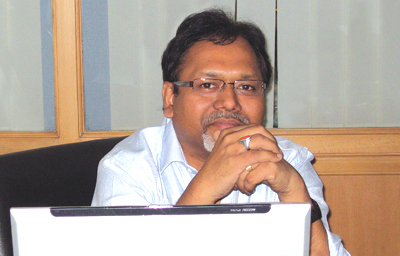INDIAN ARMED FORCES CHIEFS ON OUR RELENTLESS AND FOCUSED PUBLISHING EFFORTS

The insightful articles, inspiring narrations and analytical perspectives presented by the Editorial Team, establish an alluring connect with the reader. My compliments and best wishes to SP Guide Publications.

"Over the past 60 years, the growth of SP Guide Publications has mirrored the rising stature of Indian Navy. Its well-researched and informative magazines on Defence and Aerospace sector have served to shape an educated opinion of our military personnel, policy makers and the public alike. I wish SP's Publication team continued success, fair winds and following seas in all future endeavour!"

Since, its inception in 1964, SP Guide Publications has consistently demonstrated commitment to high-quality journalism in the aerospace and defence sectors, earning a well-deserved reputation as Asia's largest media house in this domain. I wish SP Guide Publications continued success in its pursuit of excellence.
A Word from Editor

It not only is the largest contract ever for Pilatus, but also for the Indian defence establishment for acquiring an aircraft through commercial route in open competition following India’s arduous procurement policy
The monumental multibillion dollar fourth generation plus medium multi-role combat aircraft (MMRCA) jet fighter deal may still be a while away, but it’s a time of cheer for the Indian Air Force (IAF). In the last issue of SP’s Aviation, we had reported about the Cabinet Committee on Security’s (CCS) go ahead for the $523 million PC-7 Mk.II turboprop trainer aircraft deal. After more than one scare of abort, the Indian Government on May 24 finally signed on the dotted line to acquire the trainer aircraft from the Swiss firm Pilatus. This not only proves to be the largest contract ever for Pilatus, but also for the Indian defence establishment for acquiring an aircraft through commercial route in open competition; that too while following the dictates of India’s labyrinthine and arduous Defence Procurement Policy (DPP). The deal also generates enough confidence that the complexities of the DPP can actually be surmounted through persistence resulting in successful outcomes of the defence deals. Hopefully, the much awaited MMRCA deal would be signed soon.
On the MMRCA front, the recent highly successful French visit by the IAF Chief, Air Chief Marshal N.A.K. Browne, is not only witness to greater cementing of the already strong bilateral defence ties between the two countries, it may also be the harbinger of early signing of the Rafale contract. A noticeably happy Chief after an hour-long sortie in a twin-seat Rafale—a part of his visit itinerary—further ‘thumbs up’ the notion.
The future for unmanned air systems (UAS) is bright with technological strides expected in many complementary systems. The write-up on UAS throws light on how UAS are capable of multitasking, though their classification based on size and weight would continue to govern their employability.
The Teal Group in its 2012 report predicts that over the next decade, 65 per cent of the deliveries, measured in value terms, will be high end business jets, as against the 50:50 split in the decade gone by. Hence an article on high end business jets available globally, followed by another article on the Indian establishment’s lack of understanding of the potential of business aviation in contributing to the country’s economy. This issue also has a write-up on evolution of “regional aviation” globally and the status in India.
The May 9 tragic accident of a Sukhoi Superjet SSJ-100, while on a demonstration tour in Indonesia, may have caused a lot of tongue-wagging, but as it appears to be a case of controlled flight into terrain (CFIT), the self-styled ‘prophets of doom’ may be silenced soon. Opinions vary but most industry experts feel Russia has a winner. Not only that, its attributes could also be imbibed gainfully into the ongoing Indo-Russian joint MTA programme; tripartite general contract for which was signed as late as on May 28 this year.
In the meantime, while the accident has been analysed thoroughly in this Issue’s regular columns, it is hoped that technology would find a permanent solution to at least rid the civil aviation scourge of CFIT. Finally, with no end in sight of the ongoing month-long Air India pilots’ strike and crores of rupees in losses due to heavy disruptions in scheduled flights, the question that keeps getting thrown up is whether the Indian taxpayer can continue to afford Air India. But does the Indian political leadership have the audacity to rid the nation of the massive millstone around its neck? All this and much more! Happy Reading.





